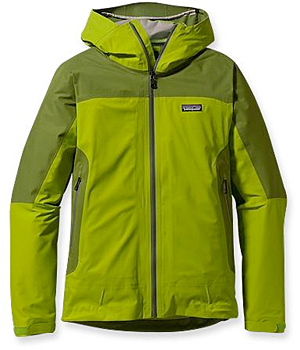In 2005, Patagonia launched its Common Threads Recycling Program, collecting worn out clothing to be made into new items. As the company boldly announced in January 2007, its goal was to have a completely closed-loop clothing line by 2010. That would mean every Patagonia product available for purchase would be manufactured from recycled materials and also would be able to be recycled into new gear once worn out, hence a closed-loop.
Goal year status
It's now 2010, so where does Patagonia stand on this mission? Trailspace checked in.
According to Jess Clayton, Patagonia public relations, 83 percent of all styles in the Spring 2010 line are recyclable. For Fall 2010, that number drops to 77 percent, because of more technical gear choices and a new day pack line that cannot be recycled. Spring 2011 inches even closer to the ultimate goal, with 90 percent of the products able to be recycled.
“There are still many challenges to recycling...especially with the more technical and trim-heavy pieces,” Clayton said. “We have made significant steps, but have more work to do.” For instance, most Patagonia Body products contain nylon and can't be recycled using their current technology. This fall, Patagonia will distribute a catalog focusing on the challenges the company has faced in closing the loop and how they plan to maintain Common Threads' momentum. Patagonia declined to offer additional details beforehand.

Patagonia's Stretch Ascent Jacket is made from 100% recycled polyester and uses a solvent-free film, making it easier to recycle at the end of its life. However, the polyester must be shipped all the way from Japan, increasing the jacket's carbon footprint. Patagonia is working toward making every product recycled and recyclable.
Despite falling short of the 2010 time frame goal, significant progress has been made since Patagonia started using recycled soda bottles in its Synchilla jackets back in 1993.
When the Common Threads program was established in 2005, Patagonia accepted Capilene performance baselayers only. Now, users also can send in Patagonia fleece (including Synchilla and Regulator insulation), Polartec fleece from any manufacturer, Patagonia cotton T-shirts, and a few additional polyester and nylon products — just look for the Common Threads tag or check the Patagonia website.
To date, 12 tons of clothing have been recycled through the Common Threads program, and 26 tons have been collected to recycle.
How the recycling process works
Once Patagonia has collected enough old stuff, the clothing is shipped to Japan on container ships that otherwise return to Japan empty. The recycling process takes place in Matsuyama, Japan, with the exception of cotton Ts, which are shipped to and processed in Italy.
For polyester recycling, zippers and snaps are removed and then worn-out garments are chopped to bits. The fabric is then formed into small pellets, broken down, and purified to produce polyester raw material — of the same quality as virgin raw material, according to Patagonia's online step-by-step process outline. Then, that material is polymerized and turned into polyester chips. The chips are melted and spun into new filament fiber that can become new clothes. Consumers go shopping, look for the Common Threads tag, and wear something old, turned into something new.
Making recyclable clothing is only part of the closed-loop process. Users need to recycle garments at the end of an item's life cycle.
How to turn stuff in
You can mail your used up garb to:
Patagonia Service Center
8559 White Fir Street
Attention: Common Threads Recycling Program
Reno, NV 89523
Any Patagonia retail store and various Patagonia dealers will accept it, too. You can find a list of locations near you on their website. An important note: you can turn in gear from any season, no matter how old — but be sure you wash it first. Employees won't accept dingy duds.
Learn more about the Common Threads Recycling Program.
Read The Footprint Chronicles to track the impact of Patagonia products, like the Stretch Ascent Jacket (above), from design through delivery.

 by Bobbi Maiers
by Bobbi Maiers









